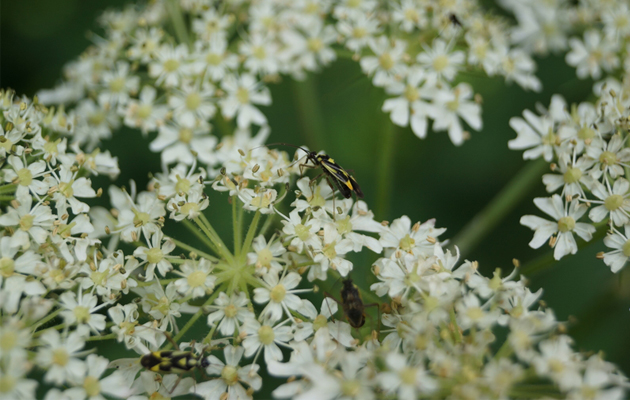Sow now for next year's early flowers
As autumn looms Country Life advises what seeds to plant in preparation for next year's early flowers.


There are paper bags everywhere. Filled with the autumn seed harvest, some are hanging in the greenhouse and others are in the shop, where the team prepares the seeds. Once the seeds are separated from the husks, they are stored in tins and, depending on the variety and the quantity, put into the fridge or kept in boxes.
We collect seed from the borders, vegetable beds and meadows. Some will be biennial and the meadow seeds tend to be perennial, but the majority of our harvested seeds come from flowering annuals. Most of them are packaged for selling, but a chosen few will be sown in October for early flowers the following year.
Sowing this late means it’s vital to exercise some control over the growing conditions. The outdoor sowing of hardy annuals is over and is easy by comparison. The seed just needs broadcasting and watering carefully. Next to dormant perennials or under young shrubs, they make mats of strong foliage that will, mostly, survive the winter.
Gilia tricolor, Limnanthes douglasii and Nemophila work very well using this method. We edge a border with the Californian Gilia tricolor and underplant dwarf fruit trees with Limnanthes. Nemophila, with its undemanding nature, is suitable for use as ground cover almost anywhere. Later sowings are a bit different.
The focus here is on the quality of each individual plant or bloom and is a popular method with sweet-pea growers who require large flowers and strong foliage for cut-flower production and exhibition. The idea is to get sturdy plants established in 9cm pots. They’ll spend the winter in an unheated greenhouse or cold frame. Low temperatures are important as they restrain the top growth in favour of a good root system. Big roots mean the plants are ready to take up increased amounts of water and nutrients from the moment they’re planted out.
Annuals particularly suited to this way of growing include cornflowers, Ammi majus, Salvia viridis, Cerinthe major and sweet peas. Stephen, our senior gardener, sows 85 varieties of our sweet peas now (and does it all over again in the spring, to prolong the display). They sit modestly in a small area of the greenhouse. It doesn’t look like much, but we know that those few trays are going to fill yards of beds. If you wanted to try a couple of varieties, Gwendoline or Mrs Bernard Jones are good choices.
From mid October to mid November in the South and a couple of weeks earlier further north, sow seed directly into pots, just a couple to each cell. Larger seeds, such as sweet peas, can be sown individually. Keep them under glass and you’ll find that there’s enough warmth and light left in the autumn day to give you some good plants. Growth can be painfully slow when compared with spring, but that’s desirable at this time.
Exquisite houses, the beauty of Nature, and how to get the most from your life, straight to your inbox.
The tricky time is deep winter. Slugs and snails will want to eat your plants and mice are happy to find a free meal at a lean time of year. We don’t like to use bait, so we keep our seedlings in frames especially designed to hold roottrainers. These are deep pots with corrugated sides, designed to encourage root growth. They’re covered in clear plastic shells to keep out diners.
Alternatively, you could put your pots on a table with an overhang, so the mice can’t climb over, or place them in an unheated propagating unit. Remember to allow air around the seedlings by lifting the lids on milder days and replacing them at night.
In early spring, gradually toughen up your plants by moving them outside without any cover they will stand several degrees of frost. Occasionally, we have a late frost that can clobber the young growth, but the strong root-ball usually means they shoot away again. Expect big plants with lots of flowers from mid May.
Our sweet peas won’t start to flower until mid June, but they’re worth waiting for. We’ll have plants with huge leaves, long stems and big flowers that are the pride of the pickery.
* Get four mixed hardy plants, selected for you from the Country Life nursery. Visit www.countrylife.co.uk/nursery
Country Life is unlike any other magazine: the only glossy weekly on the newsstand and the only magazine that has been guest-edited by His Majesty The King not once, but twice. It is a celebration of modern rural life and all its diverse joys and pleasures — that was first published in Queen Victoria's Diamond Jubilee year. Our eclectic mixture of witty and informative content — from the most up-to-date property news and commentary and a coveted glimpse inside some of the UK's best houses and gardens, to gardening, the arts and interior design, written by experts in their field — still cannot be found in print or online, anywhere else.
